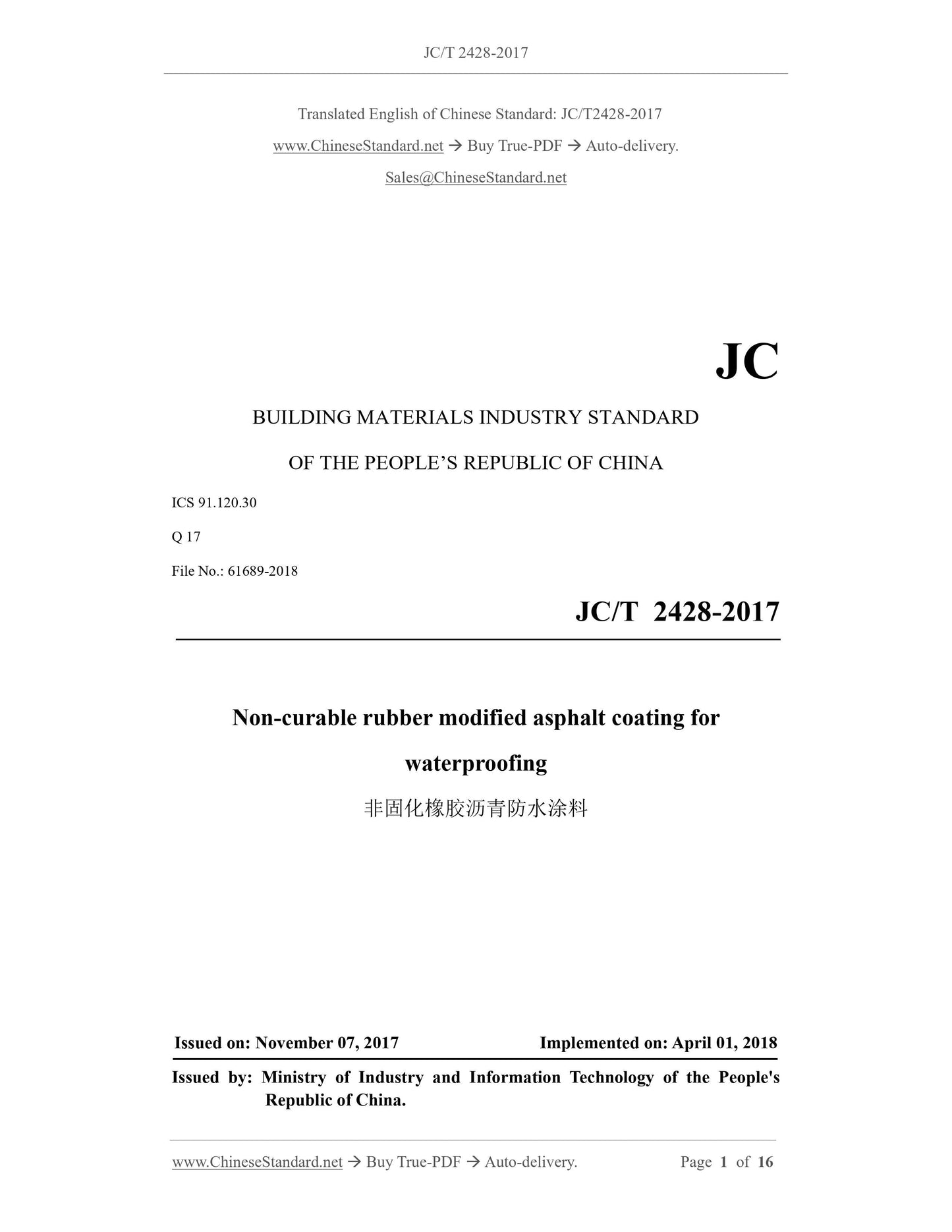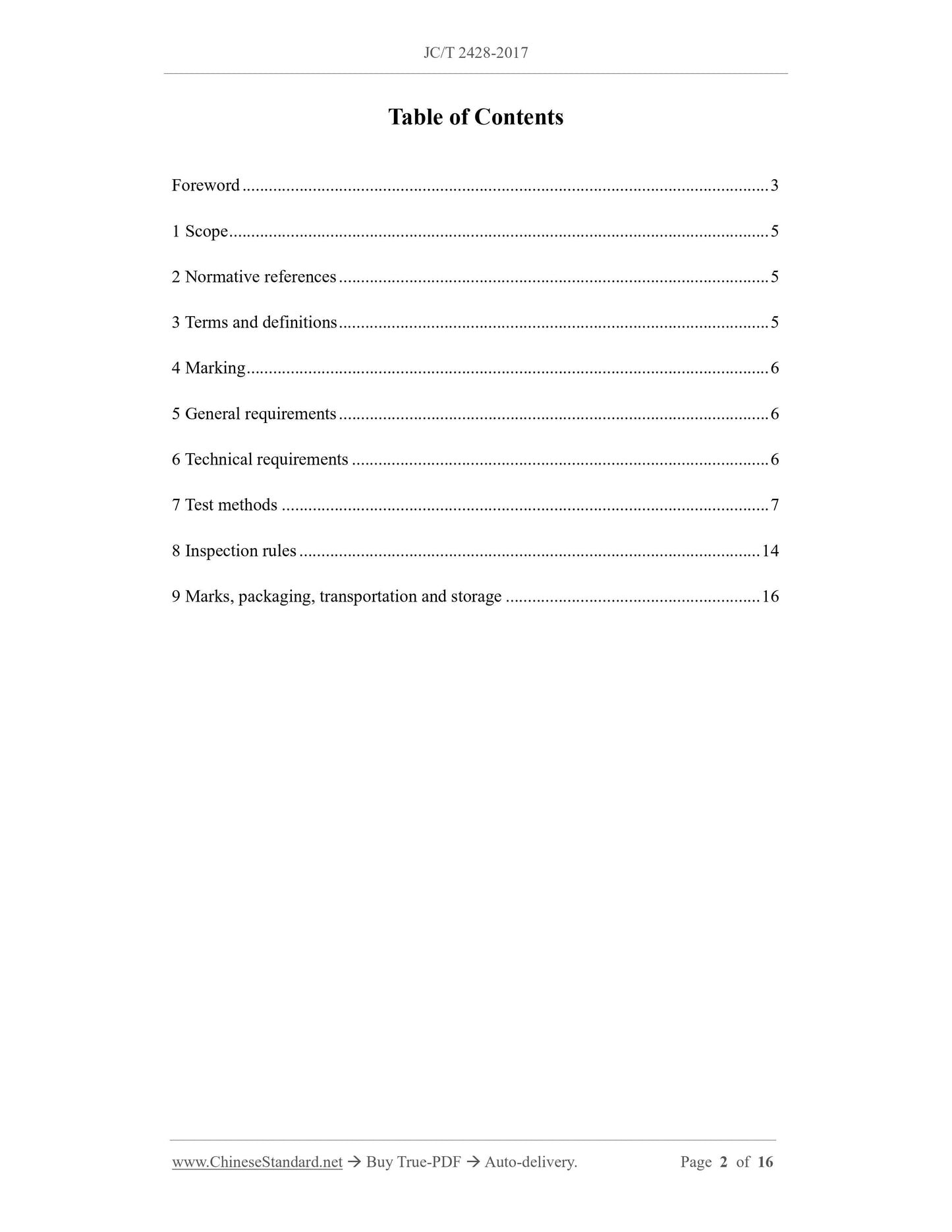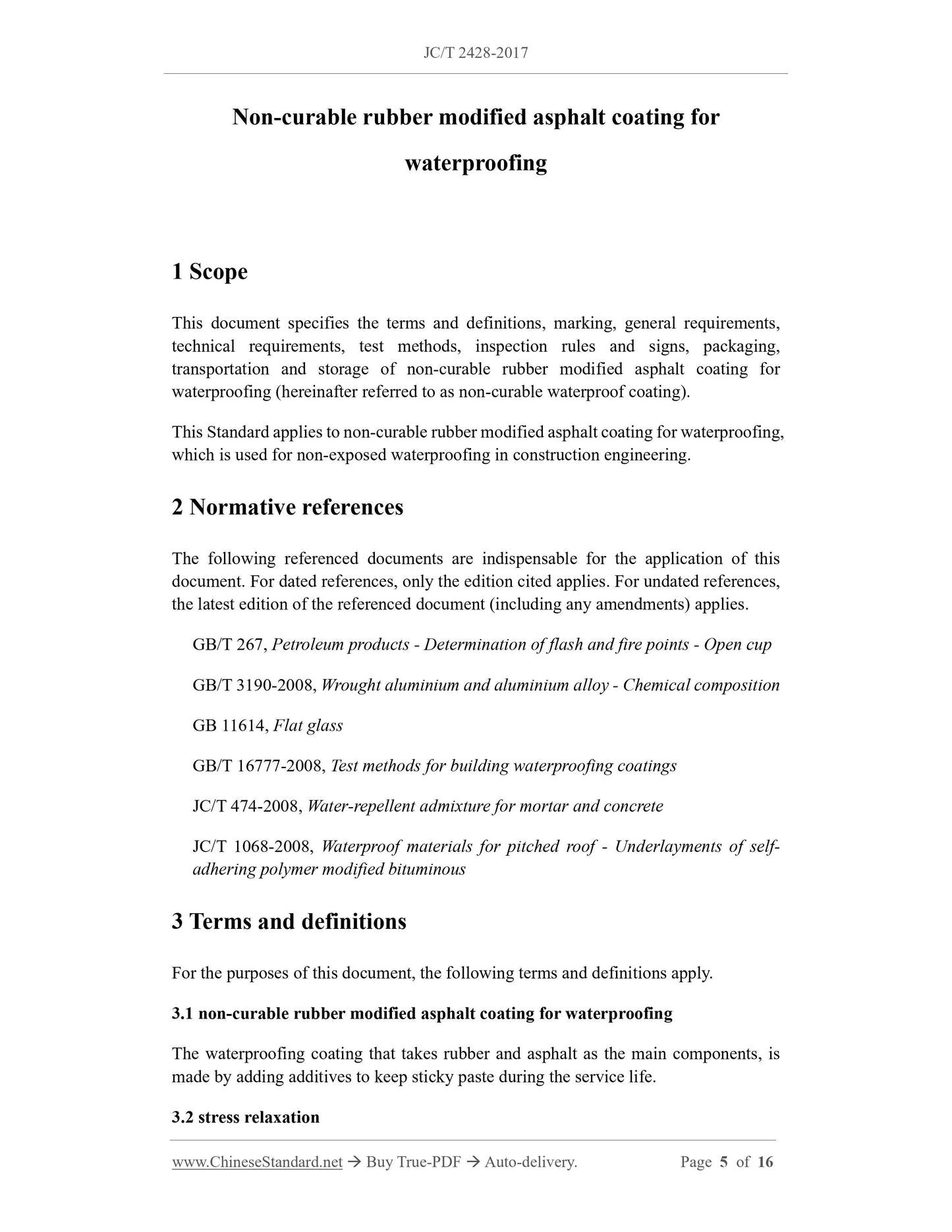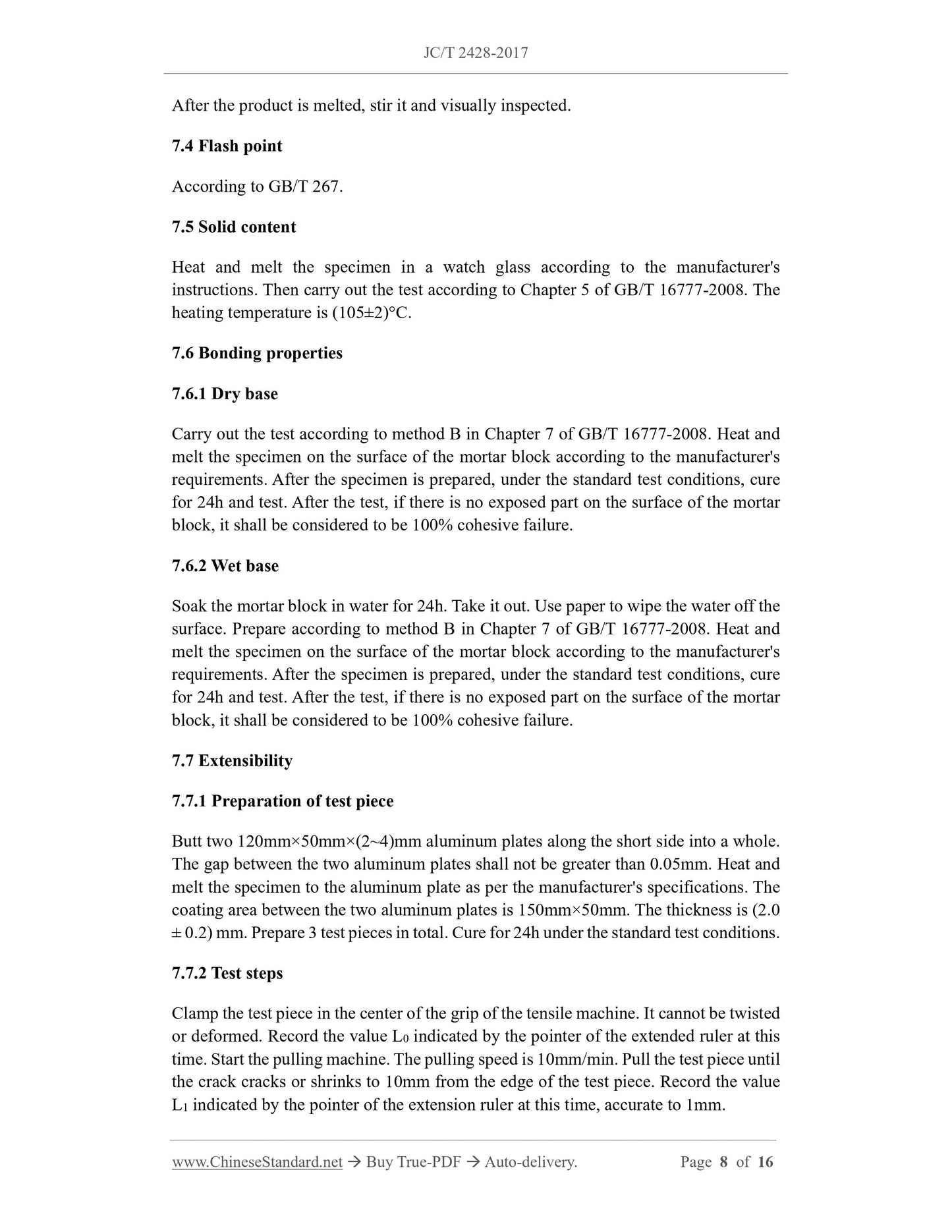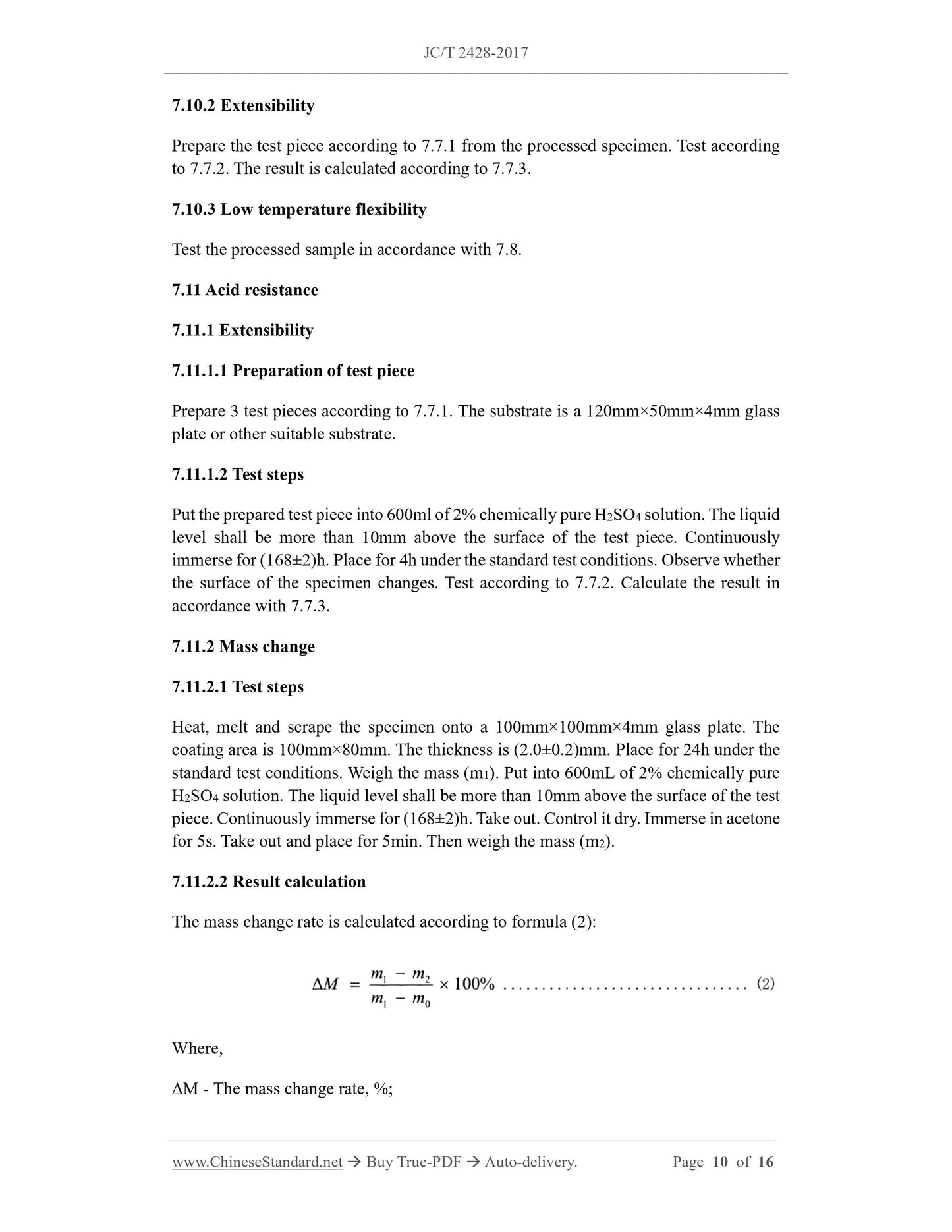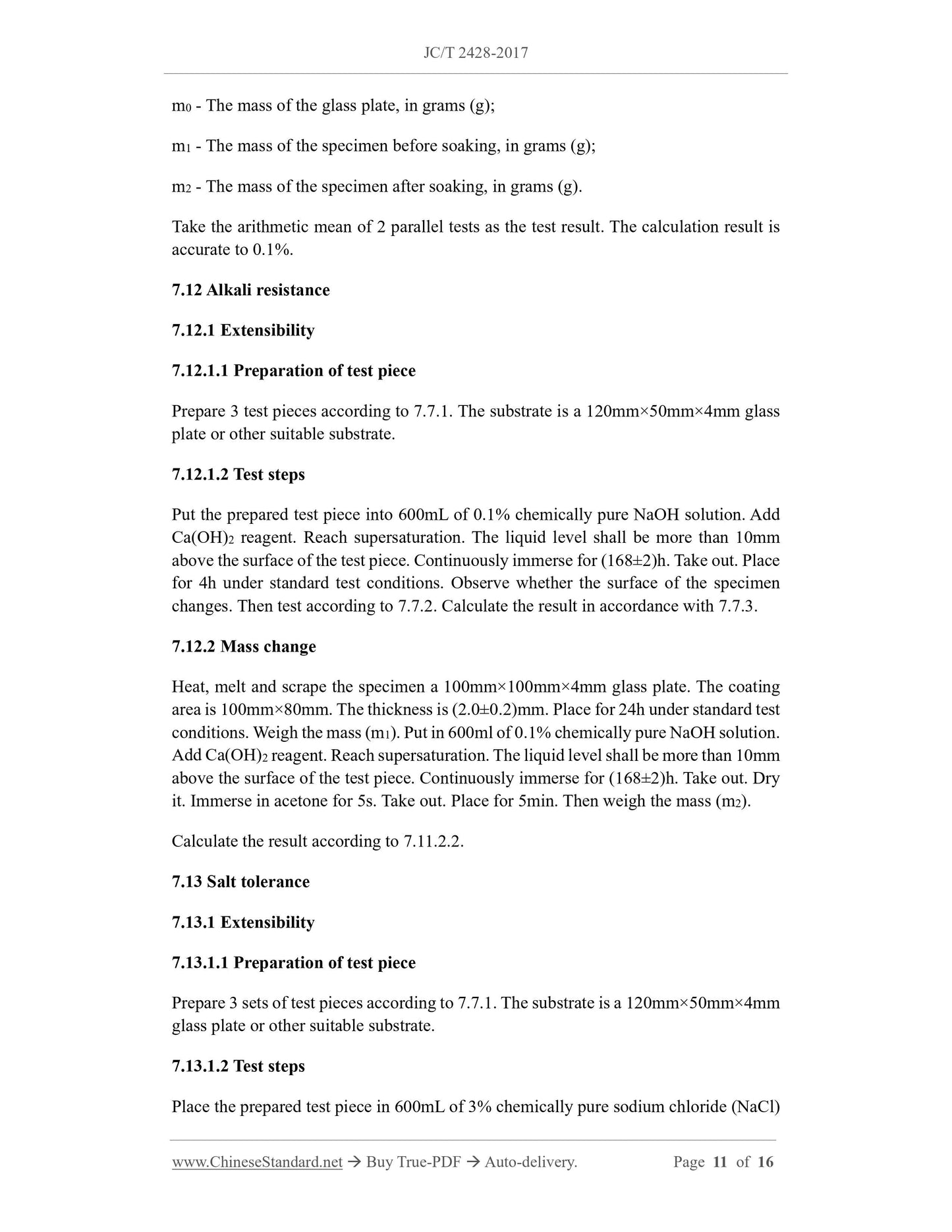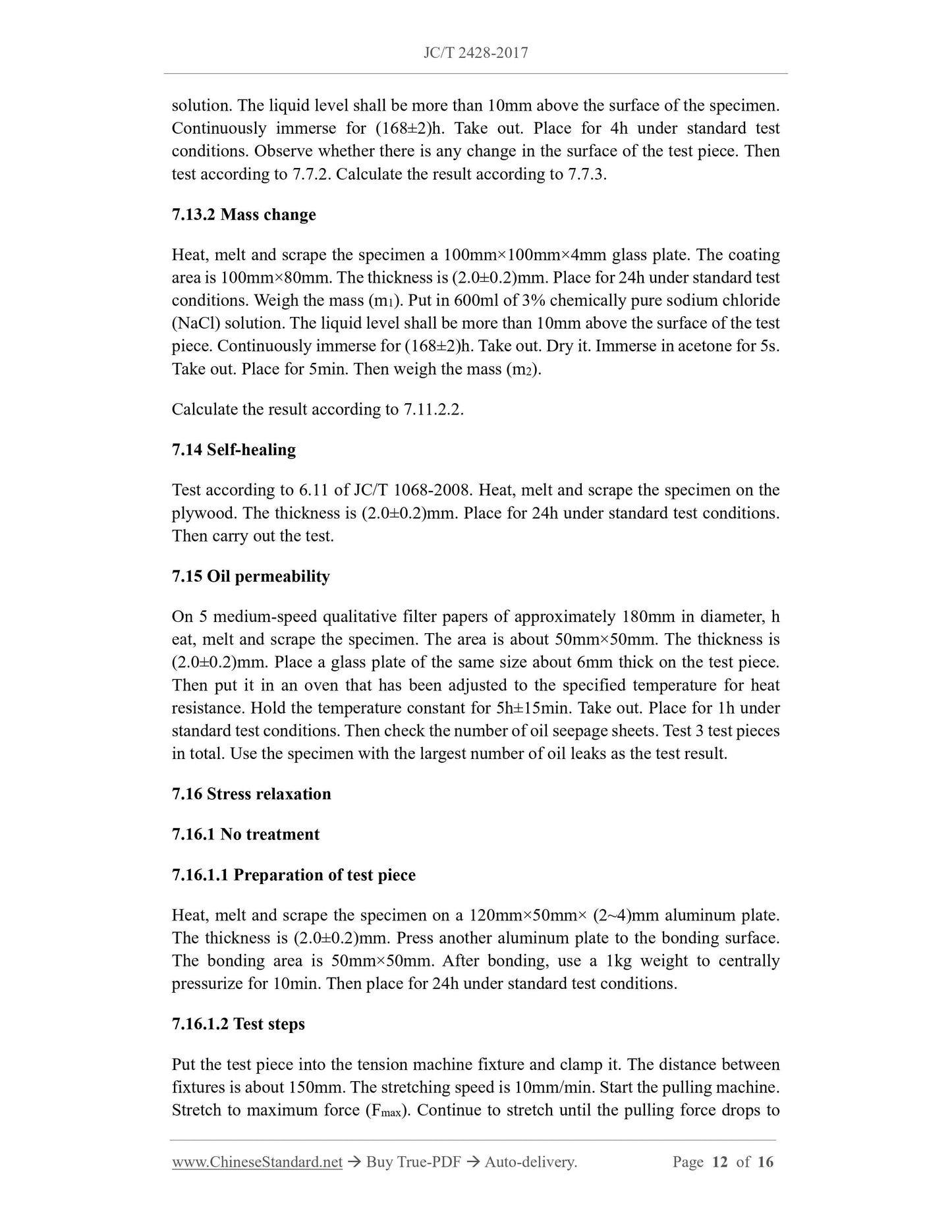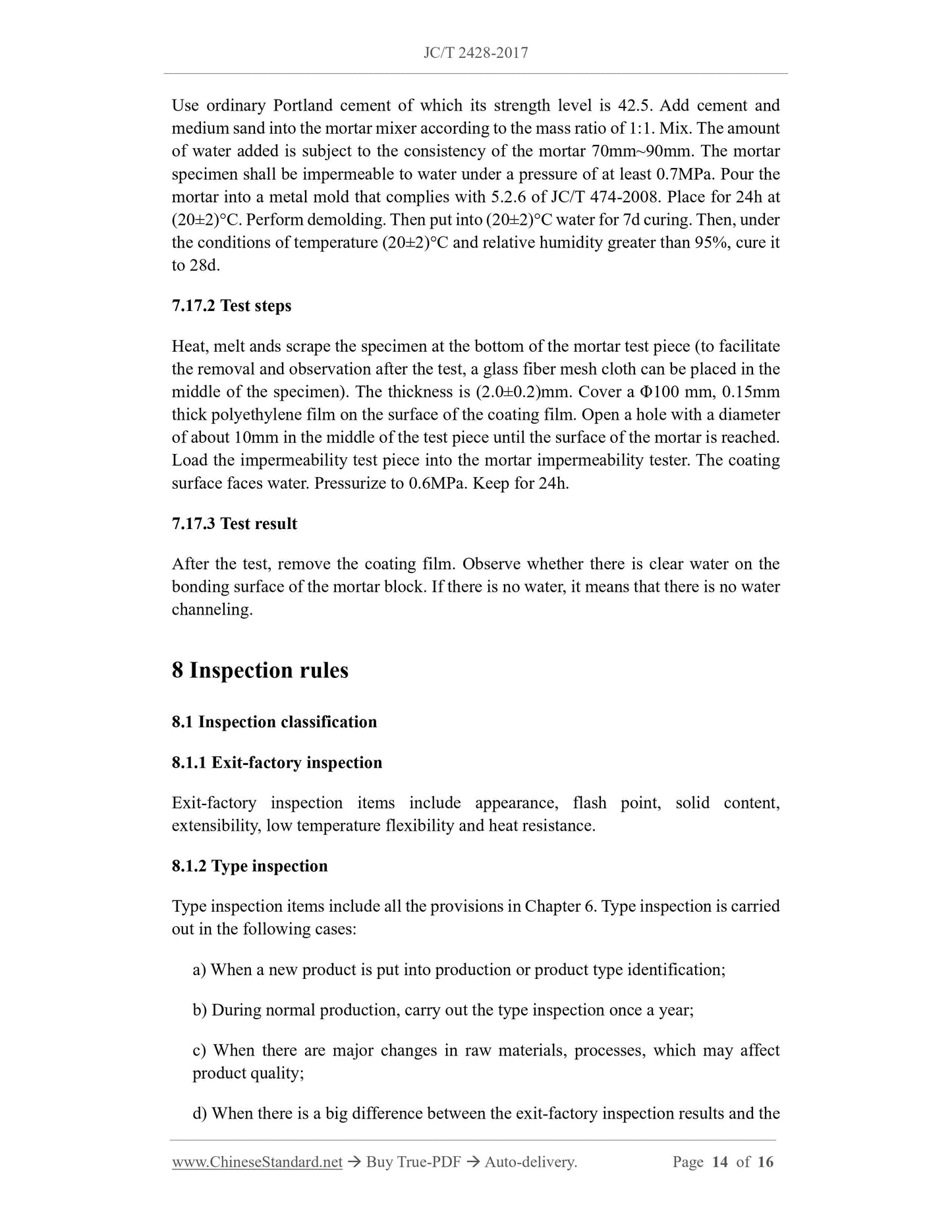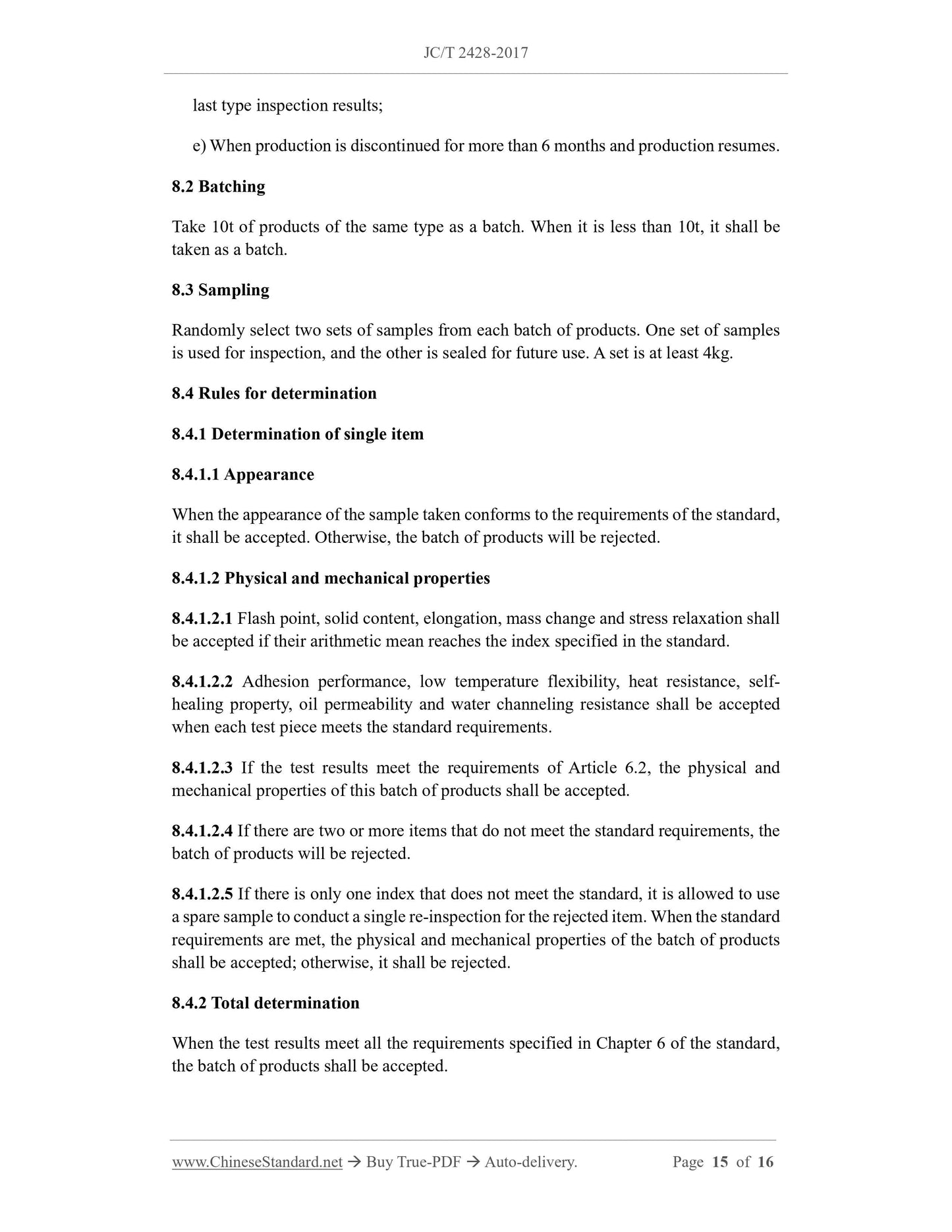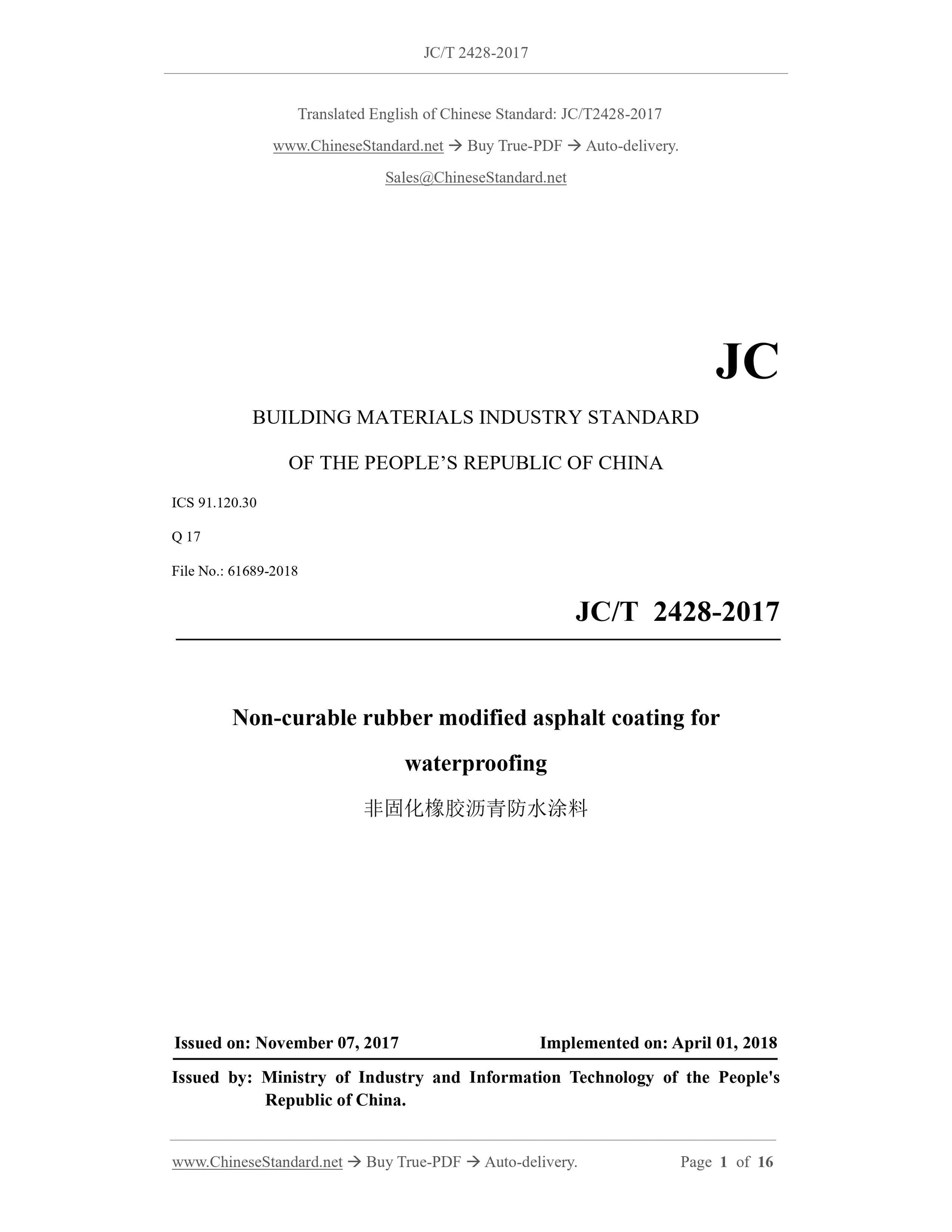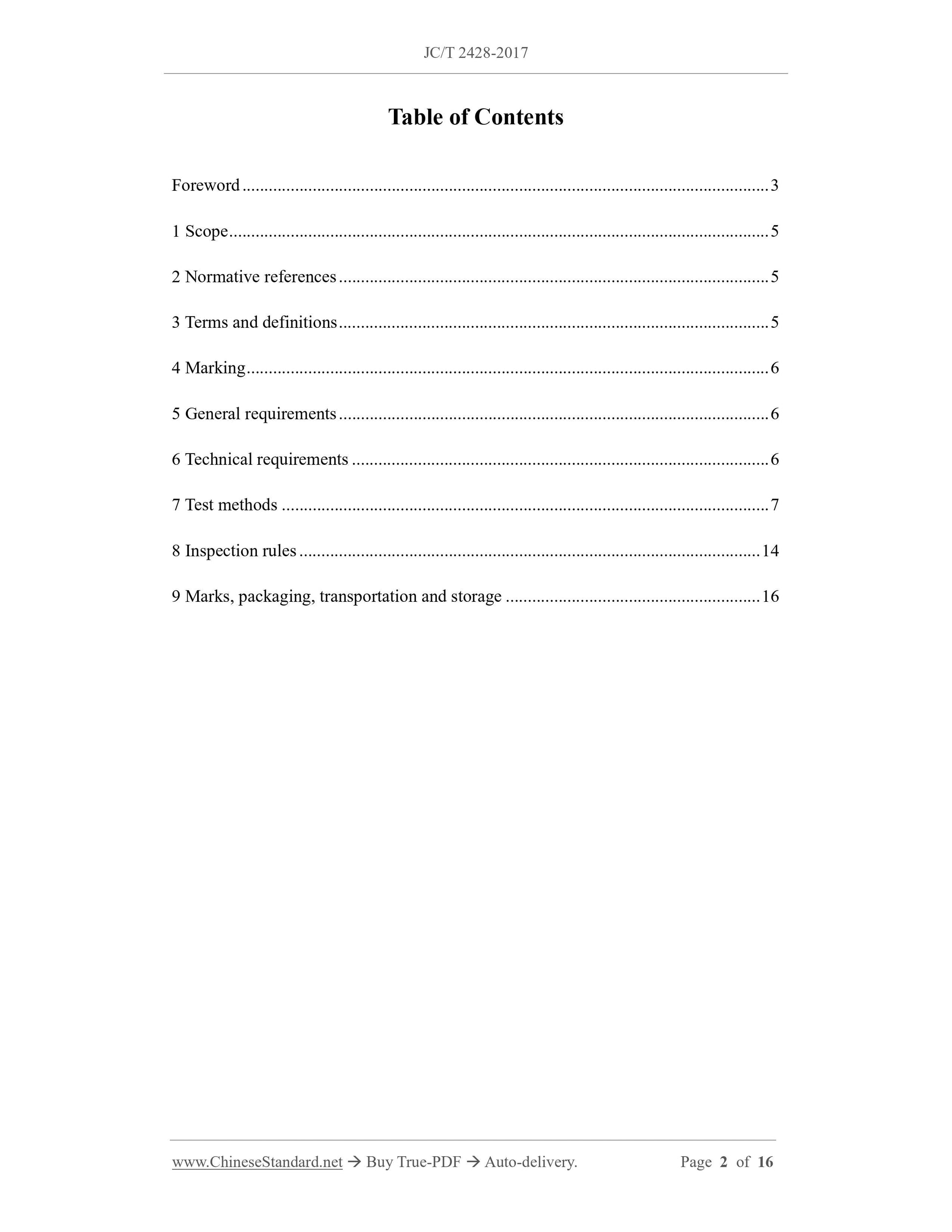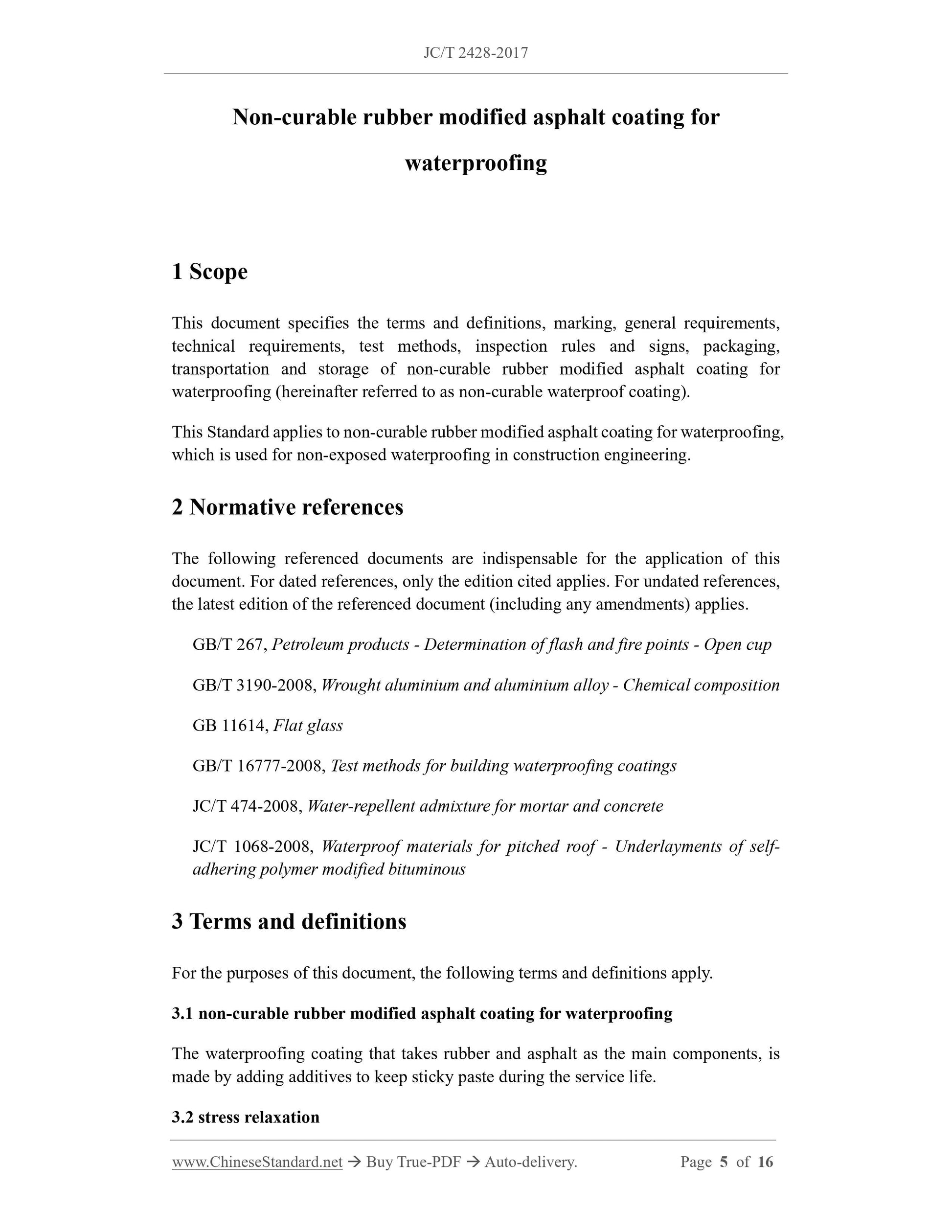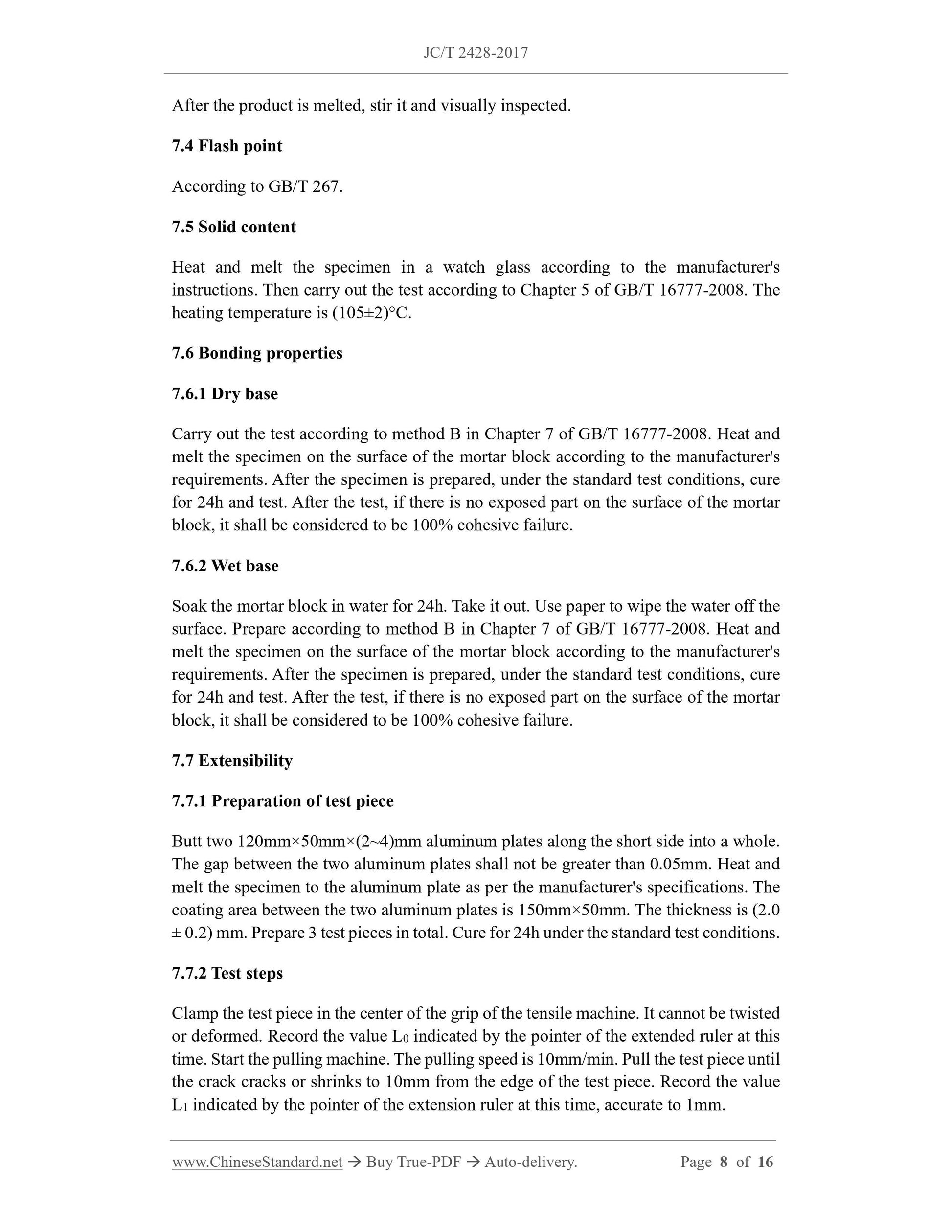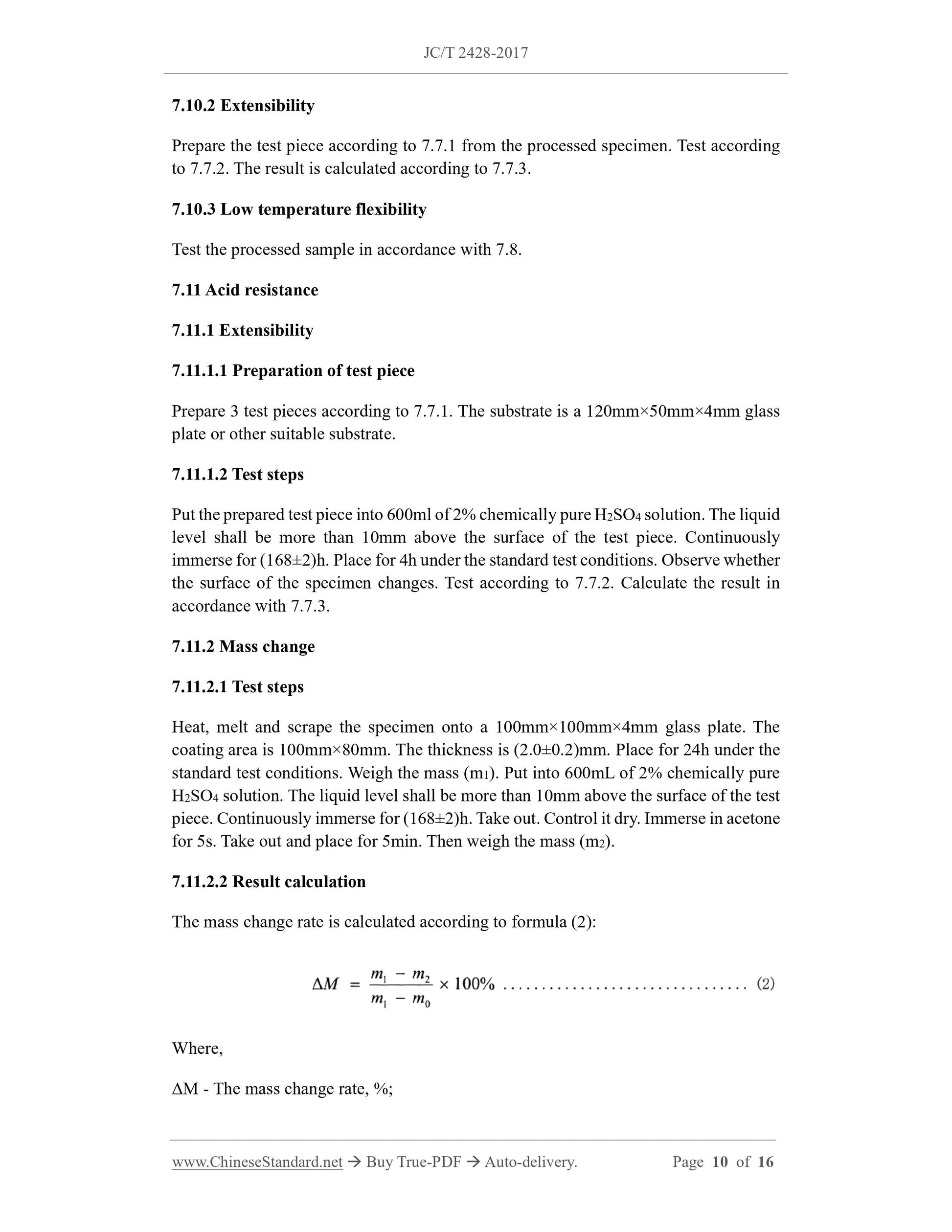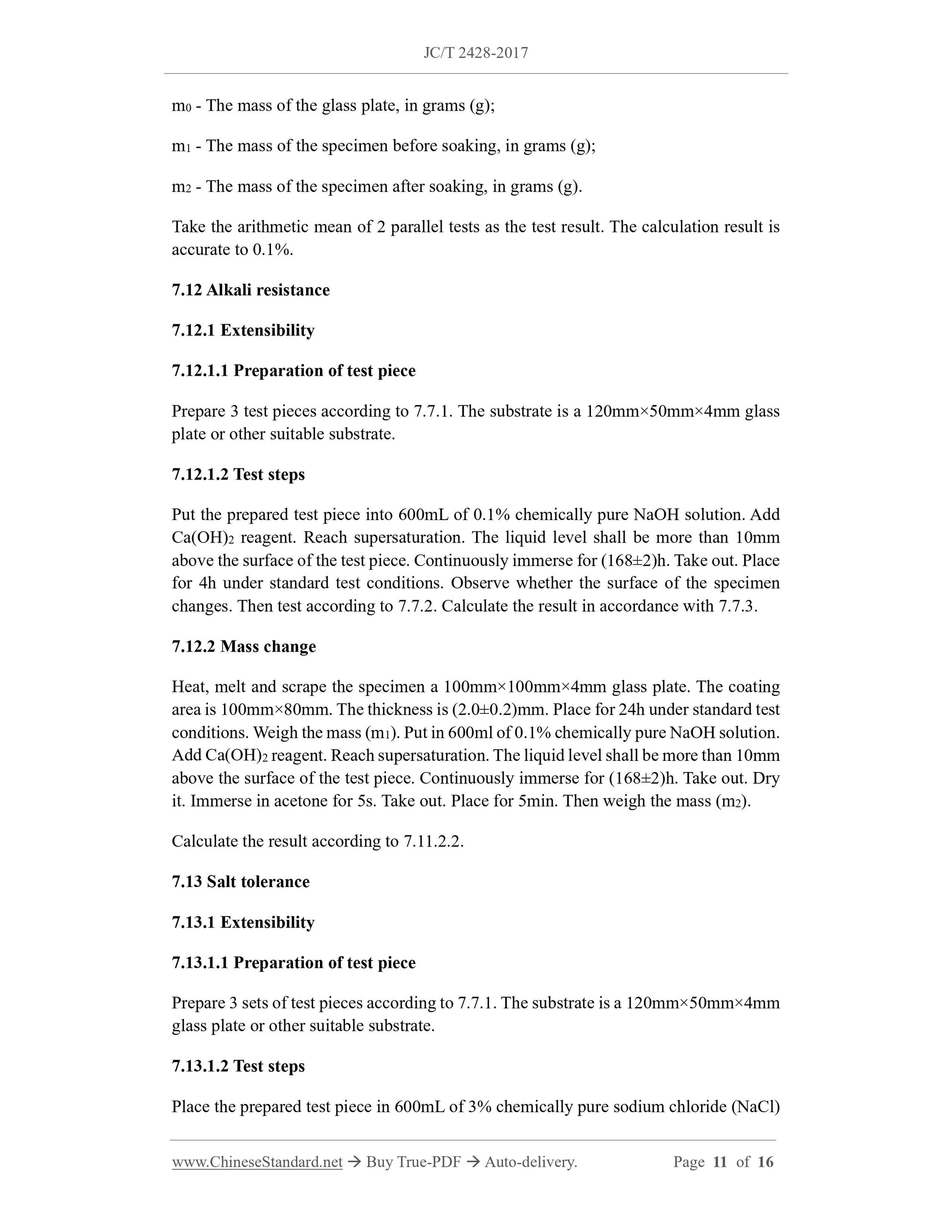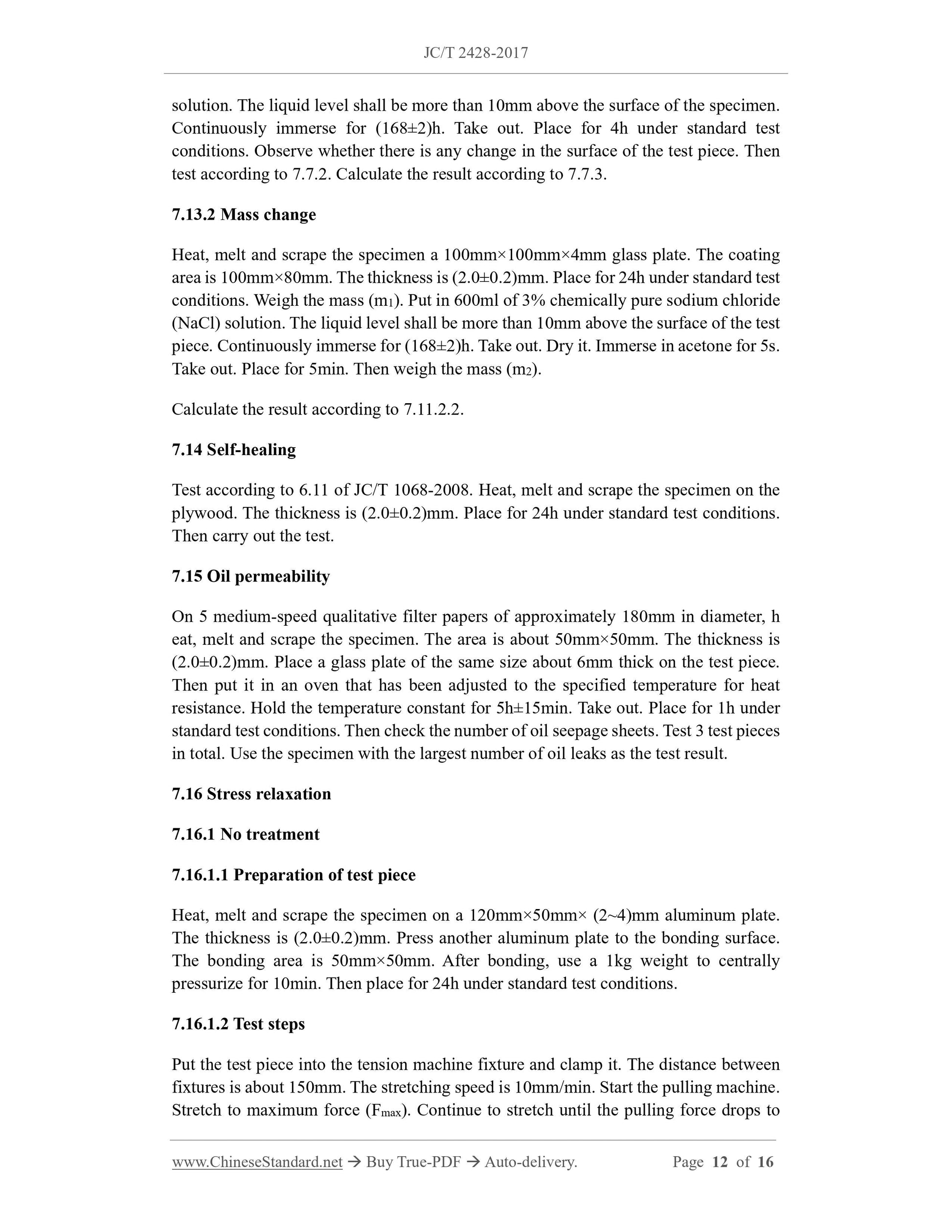1
/
of
9
www.ChineseStandard.us -- Field Test Asia Pte. Ltd.
JC/T 2428-2017 English PDF (JC/T2428-2017)
JC/T 2428-2017 English PDF (JC/T2428-2017)
Regular price
$210.00
Regular price
Sale price
$210.00
Unit price
/
per
Shipping calculated at checkout.
Couldn't load pickup availability
JC/T 2428-2017: Non-curable rubber modified asphalt coating for waterproofing
Delivery: 9 seconds. Download (and Email) true-PDF + Invoice.Get Quotation: Click JC/T 2428-2017 (Self-service in 1-minute)
Newer / historical versions: JC/T 2428-2017
Preview True-PDF
Scope
This document specifies the terms and definitions, marking, general requirements,technical requirements, test methods, inspection rules and signs, packaging,
transportation and storage of non-curable rubber modified asphalt coating for
waterproofing (hereinafter referred to as non-curable waterproof coating).
This Standard applies to non-curable rubber modified asphalt coating for waterproofing,
which is used for non-exposed waterproofing in construction engineering.
Basic Data
| Standard ID | JC/T 2428-2017 (JC/T2428-2017) |
| Description (Translated English) | Non-curable rubber modified asphalt coating for waterproofing |
| Sector / Industry | Building Materials Industry Standard (Recommended) |
| Classification of Chinese Standard | Q17 |
| Classification of International Standard | 91.120.30 |
| Word Count Estimation | 11,143 |
| Date of Issue | 2017-11-07 |
| Date of Implementation | 2018-04-01 |
| Quoted Standard | GB/T 267; GB/T 3190-2008; GB 11614; GB/T 16777-2008; JC/T 474-2008; JC/T 1068-2008 |
| Regulation (derived from) | Ministry of Industry and Information Technology Bulletin 2017 No. 48 |
| Issuing agency(ies) | Ministry of Industry and Information Technology |
| Summary | This standard specifies the terms and definitions, markings, general requirements, technical requirements, test methods, inspection rules and signs, packaging, transportation and storage of non-cured rubber asphalt waterproof coating (hereinafter referred to as non-curing waterproof coating). This standard is applicable to non-curing rubber bituminous waterproof coatings for non-exposed waterproof construction projects. |
Share
